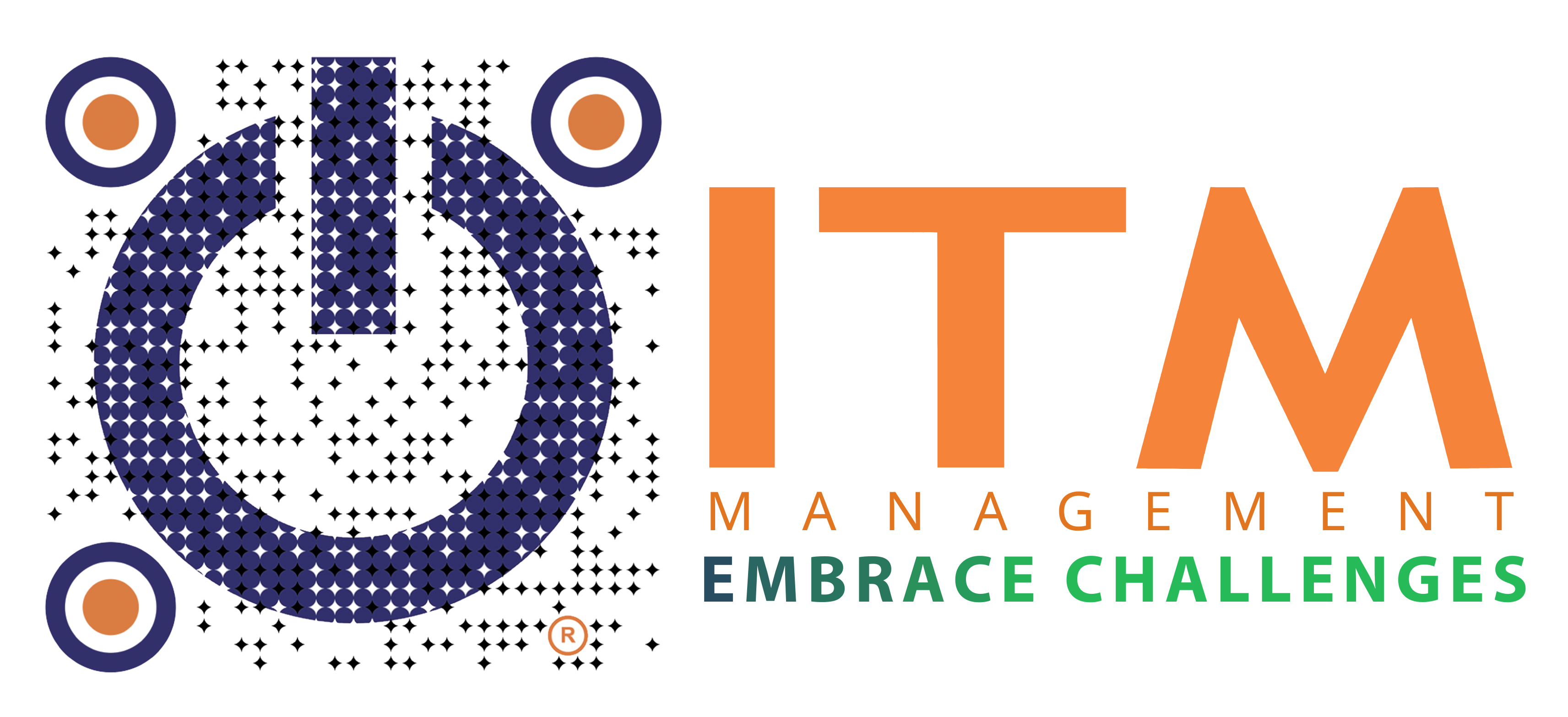What makes these incidents even more concerning is how common the underlying mistakes are. Time and again, companies discover they overlooked the same basic safeguards that countless others failed to implement. The global average cost of a data breach has now climbed to $4.44 million per incident not including the reputational harm, regulatory fines, and downtime that can cripple operations for months.
In today’s digital age, technology gives businesses more power and potential than ever before. With the right tools and strategies, companies can grow faster, work smarter, and serve customers better, this brings numerous opportunities, but it also opens the door to unprecedented risks.
Many business leaders only realize how vulnerable their operations are after a cyberattack hits, after a cyberattack happens when it’s already too late, because sensitive data is locked, stolen, reputations are damaged, and recovery costs spiral out of control. Learning from others’ experiences helps build stronger defenses and creates a safer, more resilient future for everyone.
1. Brighten the Blind Spots in Thinking
What did they think before cyber attack?
-
- Ignoring the Human Factor – Firewalls and antivirus aren’t enough. If your team isn’t trained to spot phishing and scams, your tech won’t protect you because Human error is still the #1 way attackers get in.
- Thinking “We’re Too Small” – Cybercriminals don’t care about your size they care about how easy it is to break in. So hackers often choose smaller companies specifically because they tend to have weaker security and are easier to breach.
- No Response Plan – Companies that operate without a clear incident response plan risk severe delays and costly mistakes during a cyberattack, as teams struggle to react quickly and effectively without predefined steps.
- Security Is Too Expensive – They often think cybersecurity as an optional expense, like a luxury they can’t afford, rather than a must-have for protecting their operations
The average cost of a data breach in 2025 was around $4.44 million (per IBM’s Cost of a Data Breach Report). That’s a massive hit compared to the relatively low cost of proactive steps like training employees, using security tools, or creating an incident response plan, backup and recovery plan, cutting corners on security now can lead to much bigger financial losses and headaches when an attack happens.
2. Learning And Awareness About Cyber Attacks
Cybercriminals constantly evolve their tactics using phishing, ransomware, and social engineering to exploit gaps in knowledge. Without ongoing awareness, teams may not recognize warning signs or understand how attacks unfold. Lacking of understanding leads to slower responses, greater damage, and missed opportunities to prevent breaches altogether.
For example:
-
- Malware: malicious software
- Ransomware: a form of malware, but one that encrypt file, network file, cloud file to take control of a system, locking users out until they paid
- Phishing: use communication tools: email, instant message, SMS, websites from seemingly reputable source to gain access to information
- DDoS: Distributed denial of service attack chain: target servers, services, or networks in order to disrupt the traffic, preventing access for legitimate users
- APT – Advanced persistent threats: establish an illicit, long-term presence in a network in order to collect highly-sensitive data or compromise an organization’s operability.
Learning from real-world incidents, studying attack patterns, and keeping up with cybersecurity trends are not only IT tasks but also leadership responsibilities. Once leaders understand the real risks, the next step is clear: must invest in training their staff. A well-informed team is not just helpful it’s essential. Employees who know how to spot suspicious emails, avoid risky behavior, and follow security protocols become the first line of defense against attacks. It builds a culture of security across the organization.
3. Strengthen Endpoint Protection
Endpoint devices (laptops, desktops, smartphones) are the most common entry point for attackers. Without proper protection, a single compromised endpoint can open the door for malware, ransomware, and credential theft across the entire network.
To minimize these risks, businesses need a layered approach to endpoint protection that combines prevention, detection, and rapid response. This approach secures devices, restricts untrusted software, and protects accounts:
-
- Deploy advanced security with signature-based and behavior-based detection to catch known and emerging threats.
- Monitor suspicious activities (e.g., privilege escalation, unusual file changes) for real-time threat detection.
- Use allowlisting, denylisting to permit only pre-approved, safe applications to run on systems and block unauthorized or high-risk programs automatically.
- Regularly update allowlists and denylists to adapt to new business needs and threats.
- Require MFA for critical systems (email, VPNs, cloud services, admin accounts) to add an extra layer of security.
4. Using Virtual Private Network
Every time you browse the internet, your activity leaves behind traces linked to your device’s IP address a unique identifier that can be tracked. This becomes especially dangerous when using public or unsecured Wi-Fi networks. In these environments, cybercriminals with elevated access can intercept sensitive data such as browsing history, personal information, and even location details.
A Virtual Private Network (VPN) acts as a secure gateway between your device and the internet. It masks your IP address by routing your connection through a secure server, making your online activity harder to trace. More importantly, VPNs create an encrypted tunnel that protects all data transmitted between your device and the server, shielding it from “prying eyes”.
5. Deploy Email Security
Phishing remains the most common and dangerous attack vector. It’s used to steal credentials, deliver malware, and trick employees into taking harmful actions. Because email is the front door to most organizations, protecting it is non-negotiable.
Phishing attacks are becoming more sophisticated, and no single solution can stop them all. Organizations should adopt email security strategy that combines smart technology, strong processes, and continuous user awareness.
-
- Deploy advanced email filtering tools that scan for malicious links, attachments, and spoofed domains.
- Enable DMARC, SPF, and DKIM protocols to prevent domain spoofing.
- Training phishing awareness training and simulations for employees.
- Encourage users to report suspicious emails instead of ignoring them.
- Enforce MFA on email accounts to minimize the impact of stolen credentials.
6. Multilayered Security – Defense In Dept
The concept of Defense in Depth (DiD) comes from medieval military strategy layering castle defenses to slow down and weaken attackers. In cybersecurity, this approach is just as relevant. DiD, also known as multilayered security, is based on the reality that no single tool or solution can stop every threat.
Instead of relying on one firewall or antivirus program, DiD involves implementing multiple layers of protection each designed to defend against different types of attacks and compensate for the weaknesses of others. This includes endpoint protection, network monitoring, access controls, encryption, user training, and more.
Advanced cybersecurity strategies use this layered approach to ensure broader, more resilient protection. Leaders must understand that true security isn’t about one perfect tool it’s about building a system where every layer supports the others.
7. Keep Systems Updated with Patch Management
Too many businesses still treat software and firmware updates especially for network devices as optional. This outdated mindset creates serious vulnerabilities. Hackers constantly scan the internet for outdated software and unpatched vulnerabilities that they can exploit to gain access.
Leaders must recognize that delaying updates puts the entire organization at risk. Once the importance is understood, the next step is clear: ensure all network devices are regularly updated and always back up configurations before applying changes.
Patches work like vaccines for your IT environment: they remove security gaps before attackers get a chance to use them.
-
- Apply vendor-released patches as soon as possible, especially for critical vulnerabilities.
- Automate patch deployment across operating systems and business applications.
- Maintain an inventory of all hardware and software to avoid overlooked assets.
- Schedule regular maintenance OS to minimize disruption while keeping systems secure.
8. Establish a Strong Backup & Recovery Strategy (3-2-1 Rule)
A resilient backup strategy ensures that data and systems can be restored quickly after a cyberattack, accidental deletion, or hardware failure. The 3-2-1 backup rule is widely recognized as the gold standard: keep 3 copies of your data (1 production + 2 backups), store them on 2 different types of media (e.g., disk + cloud), and keep at least 1 copy off-site in a secure location. Proper backup management not only safeguards against ransomware but also ensures business continuity in the face of unexpected disruptions.
The 3-2-1 rule (3 copies, 2 different media, 1 off-site) is more than just a guideline it’s the lifeline that keeps businesses running when everything else goes down. To put it into practice:
-
- Follow the 3-2-1 rule for all critical business data.
- Use immutable backups that cannot be altered or deleted, even by administrators.
- Isolate backups from production systems to prevent ransomware from spreading.
- Test recovery processes regularly to ensure data can be restored under pressure.
- Automate backups to run on a consistent schedule follow the quantity of input data of business.
9. Focusing On Data Loss Prevention (DLP)
Sensitive data can leak through mistakes, carelessness, or even insider threats. Data Loss Prevention tool (DLP) is a proactive approach that enforces data handling policies to protect critical information. It monitors and controls how data is accessed, used, and transferred whether by employees, systems, or external connections. There are two main ways DLP works:
-
- Context-aware controls look at who is doing what, when, and how (e.g., user, device, time, or channel).
- Content-aware controls scan the actual data like credit card numbers or personal info and block risky transfers.
- Leaders should treat DLP as a must-have, not a nice-to-have. It protects sensitive information, ensures regulatory compliance, and builds trust with customers and partners.
Why Knowing This Before an Attack Matters
The reality is that after every major breach, executives and IT leaders often repeat the same regret: “We wish we had done this earlier.” Once an attack succeeds, it’s no longer about prevention it’s about damage control, costly recovery, and rebuilding trust.
By understanding and applying these measures now, you are not only protecting your systems you are also safeguarding customer trust, ensuring business continuity, and avoiding the financial and reputational losses that can take years to repair.
Strengthen Your Cybersecurity Before the Next Attack
Every breach starts with one small gap. An unlocked device, an outdated patch, or a missed phishing email that’s all it takes for attackers to slip in. By acting early, you close the doors before cybercriminals even knock.
And the important thing: Cyber awareness isn’t a one-time effort it’s an ongoing responsibility. When leadership commits to continuous learning and team-wide training, the entire organization becomes stronger, smarter, and far more resilient.
Partner with ITM for Enterprise-Grade Protection
With ITM, you’ll gain a trusted ally who helps you stay ahead of threats with:
-
- 24/7 monitoring and AI-driven threat detection
- Lightning-fast, expert-led incident response
- Tailored security frameworks built for your business goals
Your resilience starts here.
Let ITM help you build a safer, smarter, and future-ready workplace where both your data and your people are protected.








